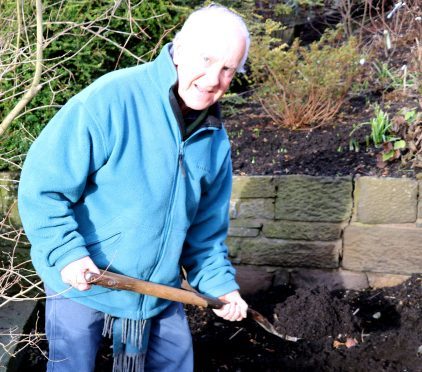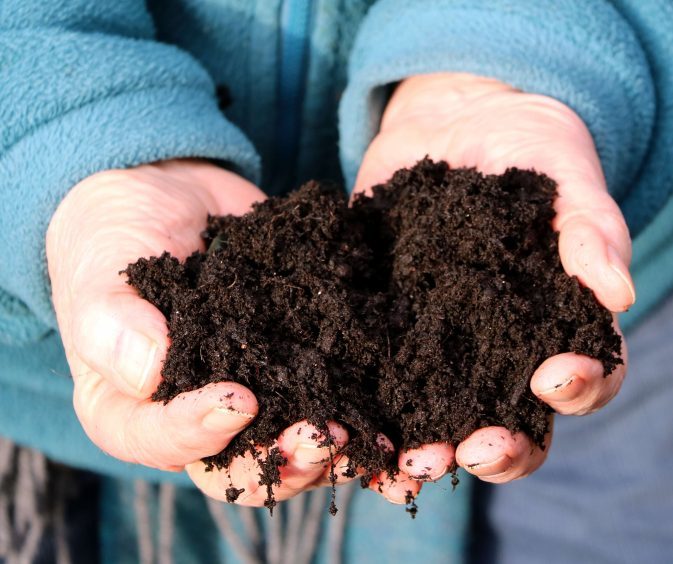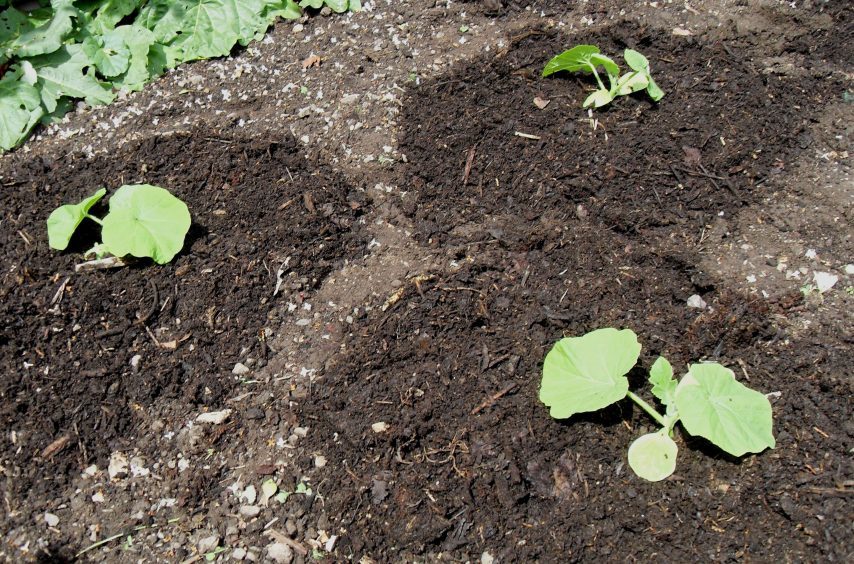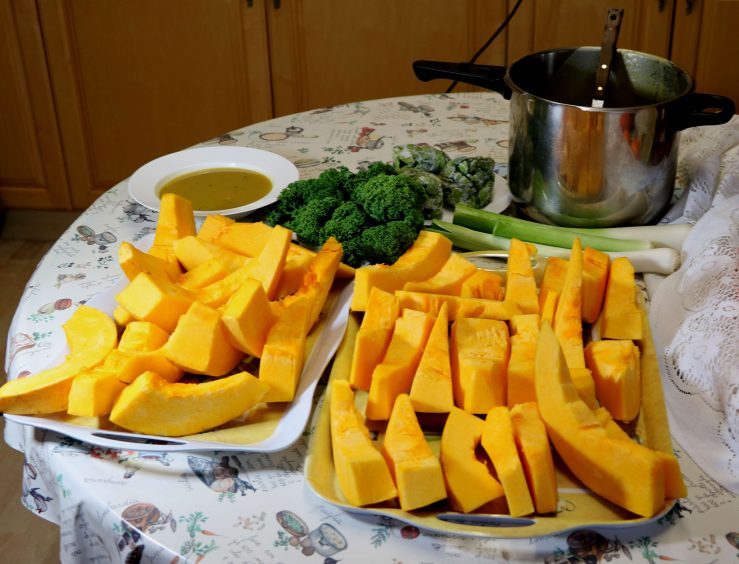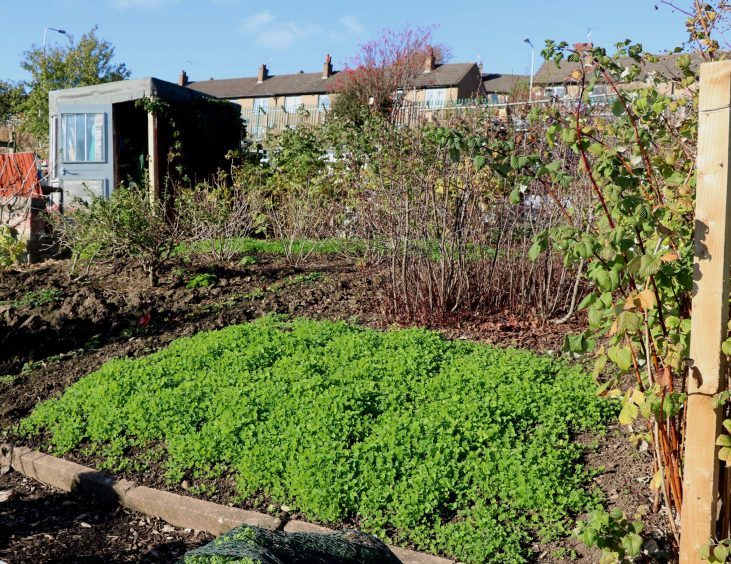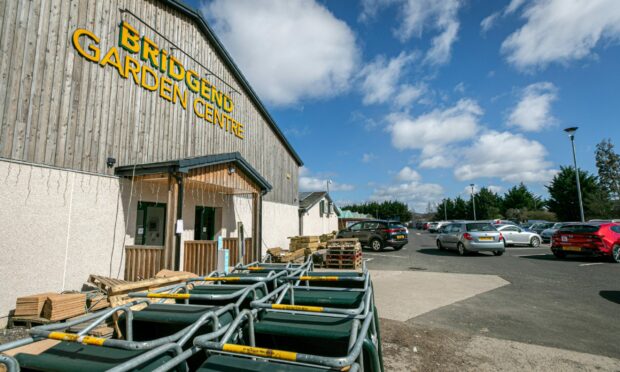We are all aware as gardeners that to grow plants at their best we need to cater for their own particular requirements, and that can vary tremendously.
Cacti need sandy soils with perfect drainage, water lilies need a pool of water, rock garden plants like thin stony soils with good drainage and vegetable crops like fertile soils.
Allotment plot holders and others with gardens around their houses grow a lot of flowers, shrubs, roses, fruit trees and bushes and a wide range of vegetables.
These all need fertile soil, which is often not what we start off with.
Even allotment plots over fifty years old can be infertile if plot holders over time never added any compost or manure, but always took a crop of vegetables every year, then wonder why their potatoes and cabbages are not vey big.
It is quite surprising to see many allotment plots with no compost heap.
We can do many things to bring our soils up to a highly fertile standard.
First look at what kind of soil you have.
Angus and Tayside have a great variety of soils from the fertile alluvial plains of the Carse of Gowrie, the sandy soils around the coast to the boulder clays inland deposited after the last ice age.
Some parts of the central belt on higher ground are wet and peaty, but with good drainage can be quite fertile.
Over the years the boulder clays have had the bigger stones removed to assist cultivation, and these soils can be very fertile as clay particles hold a lot of nutrients which can be released by encouraging soil organisms to break down the clay.
If these soils are acidic adding lime is very beneficial as it assists nutrient release as well as helping to create a crumbly soil structure which in turn drains better.
Get a small garden soil test kit to find out just how acidic your soil is so you can be guided as to how much lime to add. For allotment holders who grow cabbage, cauliflower, Brussels sprouts and kale in their rotation it is normal to lime a quarter of the plot once every four years to that area allocated to brassicas.
Adding manure and compost creates humus which darkens the soil and helps it warm up quicker, as well as adding nutrients for crops and food for soil organisms which open up the soil.
Every garden should have a compost heap for all the garden waste, kitchen waste, leaves, grass clippings and annual weeds.
Old compost from used growbags, pots, tubs and hanging baskets can all be added, but check for signs of vine weevil grubs before you mix in the compost.
Although it may be hard work it is very beneficial to help the compost heap rot down if you can turn it twice a year.
This way you can get well rotted compost ready to use in nine months, or less during summer when soil organisms are at their most active.
It is normal to add manure and compost to the soil ahead of digging and then incorporate this into the soil as digging proceeds.
Digging in early winter and leaving the soil as rough as possible allows weathering by frosts over a large surface area.
Most gardeners dig the normal full depth of the spade, but for some permanent plants such as trees and fruit bushes which will be in the ground for years it is better to double dig the soil to break up subsoil and give them a deeper root zone.
Mulching with well rotted compost around trees, roses and fruit bushes is of great benefit to retain moisture during the summer, control weeds as well as supplying a steady stream of nutrients.
Grow a green manure crop of clover, ryegrass, vetches or field beans in early spring and late summer before and after crops when land is vacant helps to break up soils and adds humus when the crops rot down after digging in.
Wee jobs to do this week
When the winter colds bites and snow covers the ground, now is the time to lift just a few leeks, pick some kale, raid the freezer for some broad beans and bring a pumpkin out of storage to make a large pot of pumpkin soup.
Anna chops up the kale finely, slices a couple of leeks, adds the broad beans and prepared pumpkins without the skin and adds to the pot with some stock left over from a cooked gammon steak.
After thirty minutes and a sprinkling of pepper, the pumpkin soup is ready to serve. On a cold winter’s day this is the perfect tonic.
